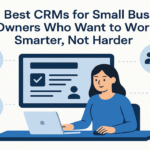When brands are struggling, this doesn’t mean you have to come up with something brand new. Let’s take a look at pivoting, when it might work for you, and how to do so successfully.
What is ‘pivoting’?
Put simply, pivoting is the act of switching up the direction your business is going in. This might be if you have realized your products or services no longer meet the needs of your target market, or the market has become saturated enough that you need to breathe new life into your offerings to differentiate yourself.
Let’s take a look at an example. Traditional slot games tend to have a consistent formula – three reels, and one payline. With this in mind, the industry pivoted with online slots, Megaways™ slots, video slots, and other technologies to broaden their offerings. As these games have different paylines, mechanics, and structures, players have the opportunity to mix distinctly different games into their day, reducing the risk of players getting bored by the same old thing.
In other words, pivoting involves tweaking your products, services, marketing strategy, business model, and so on, enough that it makes your offerings seem fresh and new. Now, this doesn’t mean you need to reinvent the wheel! As shown by our online slots example, pivoting can be as subtle as changing single paylines to cluster wins, opening up a new way of gaming without compromising on brand goals and messaging.
When to Pivot Your Business Strategy
Pivoting doesn’t always require drastic measures. Timing is crucial for success, as it’s not a one-size-fits-all solution.
As a rule, businesses should consider pivoting if they see minimal returns on investments, face fierce competition, or experience stagnant growth. It’s also worth evaluating if customer preferences shift significantly, or if your market interactions don’t meet expectations due to industry shifts.
If these factors don’t apply, a subtler approach may suffice. Forbes suggests differentiating your business by delivering top-tier services, addressing consumer pain points effectively, and maintaining a culture of innovation.
How to pivot
Source: Pexels
Once you have decided that pivoting is the best step forward, it is important to get a comprehensive overview of the market. What are your competitors doing? How have consumer needs, demands, and perceptions changed? Are there any untapped areas that can be capitalized on? Armed with the market research, get to the drawing board to see what direction would be best.
Perhaps this is to change your marketing strategy by expressing your values more clearly – after all, Harris Poll research found that 82% of consumers prefer to do business with a brand that shares the same values as them. Or, this might be to add a new feature to your product to differentiate it from the pack. With these ideas in mind, you can make a comprehensive plan of action – a pivoting strategy if you will – before executing your plan to a tee.
Conclusion:
In conclusion, pivoting your business can be a strategic move to breathe new life into your offerings without starting from scratch. It’s about understanding when change is necessary—whether due to evolving market trends, increased competition, or shifting consumer preferences—and seizing opportunities to innovate. By conducting thorough market research and aligning with customer values, businesses can successfully pivot by refining products, adjusting strategies, or introducing new features.
Remember, successful pivoting isn’t about drastic overhauls but rather strategic adjustments that resonate with your audience while staying true to your brand’s core identity. Embrace flexibility, adaptability, and creativity in your approach to navigating business challenges, ensuring your continued relevance and success in a dynamic marketplace.













